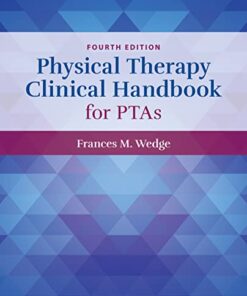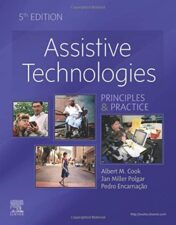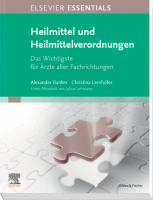- Paperback: 484 pages
- Publisher: Demos Medical; 1 edition (December 10, 2013)
- Language: English
- Type : PDF ORIGINAL
- ==========================+======================
-
Note : We will send ebook download link after confirmation of payment via paypal success
Payment methods: Visa or master card (Paypal)
Essentials of Spinal Cord Medicine 1st Edition
$10
by Sunil Sabharwal
- A concise, practical manual designed for rapid access to key information on a broad range of topics integral to the practice of spinal cord medicine
- Covers both traumatic spinal cord injury and non-traumatic disorders and their evaluation, management, medical complications, functional rehabilitation, and quality of life concerns
- Packed with useful tables to highlight and reinforce key material
- Formatted consistently with short, reader-friendly paragraphs and clarifying sub-titles
Essentials of Spinal Cord Medicine 1st Edition
“From the first to the last page, this book is so full of information that as a person working in the world of spinal cord injury, I found myself in an unfamiliar situation. Never had I read a book related to my profession that I didnÌt have trouble putting down. IÌm not saying that such books are boring by any means however, they are not the captivating fictional reads that keep people up late on work nights thinking ‘just one more chapter.’ Essentials of Spinal Cord Medicine was that type of book for me!… Overall, I thought this book was nothing short of fantastic… it was so full of information that makes me feel more confident as a technologist, and more compassionate as a human. I would highly recommend this for any practitioner working in the field where they may encounter a person with spinal cord injury.” — Donna Jacobs, R. EEG T., CNIM, The Neurodiagnostic Journal
This compact text is a practical, concise guide for clinicians involved in the care of patients with spinal cord injuries and disorders. It covers a comprehensive and diverse list of topics encompassing the principles and practice of spinal cord injury care, including basic science fundamentals, traumatic spinal cord injury, non-traumatic myelopathies, physical function and rehabilitation, medical consequences and complications of spinal cord injury, psychosocial and quality of life issues, and systems-based practice.
Chapters are consistently formatted for ease of use and are organized under the broad headings of general principles, clinical considerations, and knowledge gaps and emerging concepts, and conclude with a curated list of suggested readings. Within these categories, specifics on underlying pathophysiology and etiology, assessment (examination, testing, differential diagnosis, prognosis, and risk factors) and management (non-pharmacological, medications, surgical procedures, follow-up and monitoring, primary and secondary prevention, and complications), and recent clinical advances and promising research are easily accessed. The book also addresses such quality of life issues as psychological adaptation, sexuality and fertility, vocational training, driving, and exercise, and includes information about systems of care and patient safety as well as ethical considerations. The guide is peppered with useful tables that highlight and reinforce key material. Additionally, ÏPractice PearlsÓ in selected chapters enhance the guide as a handy go-to reference for clinicians and trainees in multiple disciplines who care for people with spinal cord injuries and disorders.
Key Features:
Product Details
Related Products
PHYSICAL MEDICINE & REHABILITATION BOOKS
Fisioterapia en procesos oncológicos y quirúrgicos de cabeza y cuello (Original PDF from Publisher)
PHYSICAL MEDICINE & REHABILITATION BOOKS
Toutes les clés pour réussir en STAPS. Mention « Éducation Motricité » (Original PDF from Publisher)
PHYSICAL MEDICINE & REHABILITATION BOOKS
PHYSICAL MEDICINE & REHABILITATION BOOKS
Médecine du ski: Pratiques, recommandations, prévention (Original PDF from Publisher)
PHYSICAL MEDICINE & REHABILITATION BOOKS
Soins primaires en kinésithérapie (Original PDF from Publisher)
PHYSICAL MEDICINE & REHABILITATION BOOKS
Whittle’s Gait Analysis, 6th edition (Original PDF from Publisher)
PHYSICAL MEDICINE & REHABILITATION BOOKS
Physiotherapy for the Hip Joint (Original PDF from Publisher)
PHYSICAL MEDICINE & REHABILITATION BOOKS
PHYSICAL MEDICINE & REHABILITATION BOOKS
Oncology Rehabilitation: A Comprehensive Guidebook for Clinicians (Original PDF from Publisher)
PHYSICAL MEDICINE & REHABILITATION BOOKS
PHYSICAL MEDICINE & REHABILITATION BOOKS
Campbell’s Physical Therapy for Children, 6th edition (Original PDF from Publisher)
PHYSICAL MEDICINE & REHABILITATION BOOKS
Electroterapia práctica (2ª ed.): Avances en investigación clínica (Original PDF from Publisher)
PHYSICAL MEDICINE & REHABILITATION BOOKS
Foundations of Kinesiology, 2nd Edition (Original PDF from Publisher)
PHYSICAL MEDICINE & REHABILITATION BOOKS
Guide to Evidence-Based Physical Therapist Practice, 5th Edition (Original PDF from Publisher)
PHYSICAL MEDICINE & REHABILITATION BOOKS
Physical Therapy Clinical Handbook for PTAs, 4th Edition (Original PDF from Publisher)
PHYSICAL MEDICINE & REHABILITATION BOOKS
PHYSICAL MEDICINE & REHABILITATION BOOKS
PHYSICAL MEDICINE & REHABILITATION BOOKS
Fascial Manipulation ® for Internal Dysfunctions – Practical Part (Original PDF from Publisher)
PHYSICAL MEDICINE & REHABILITATION BOOKS
PHYSICAL MEDICINE & REHABILITATION BOOKS
Practical Evidence-Based Physiotherapy,3rd edition 2022 Original PDF
PHYSICAL MEDICINE & REHABILITATION BOOKS
PHYSICAL MEDICINE & REHABILITATION BOOKS
Therapeutic Agents for the Physical Therapist Assistant 2022 Original PDF
PHYSICAL MEDICINE & REHABILITATION BOOKS
PHYSICAL MEDICINE & REHABILITATION BOOKS
PHYSICAL MEDICINE & REHABILITATION BOOKS
PHYSICAL MEDICINE & REHABILITATION BOOKS
Hip and Knee Pain Disorders Integrating manual therapy and exercise 2022 Original pdf
PHYSICAL MEDICINE & REHABILITATION BOOKS
Kinetic Control Revised Edition The Management of Uncontrolled Movement 2020 Original pdf
PHYSICAL MEDICINE & REHABILITATION BOOKS
Goodman and Fuller’s Pathology: Implications for the Physical Therapist 5th Ed 2022 Original PDF
PHYSICAL MEDICINE & REHABILITATION BOOKS
PHYSICAL MEDICINE & REHABILITATION BOOKS
Analyzing Scoliosis: The Pilates Instructor’s Guide to Scoliosis 2019 Original PDF
PHYSICAL MEDICINE & REHABILITATION BOOKS
PHYSICAL MEDICINE & REHABILITATION BOOKS
PHYSICAL MEDICINE & REHABILITATION BOOKS
Ultrasonography for the Upper Limb Surgeon 2022 Original pdf+videos
PHYSICAL MEDICINE & REHABILITATION BOOKS
Clinical Guide to Musculoskeletal Medicine A Multidisciplinary Approach 2022 Original pdf
PHYSICAL MEDICINE & REHABILITATION BOOKS
Evidenzbasierte Elektrotherapie Theorie und Praxis 2022 Original pdf+videos
PHYSICAL MEDICINE & REHABILITATION BOOKS
Cerebral Palsy A Practical Guide for Rehabilitation Professionals 2022 Original pdf
PHYSICAL MEDICINE & REHABILITATION BOOKS
Fundamental Orthopedic Management for the Physical Therapist Assistant 2021 Original pdf
PHYSICAL MEDICINE & REHABILITATION BOOKS
PHYSICAL MEDICINE & REHABILITATION BOOKS
PHYSICAL MEDICINE & REHABILITATION BOOKS
A Practical Approach to Interdisciplinary Complex Rehabilitation 2022 EPUB & converted pdf
PHYSICAL MEDICINE & REHABILITATION BOOKS
PHYSICAL MEDICINE & REHABILITATION BOOKS
PHYSICAL MEDICINE & REHABILITATION BOOKS
Physical Therapist Assistant Examination Review and Test-Taking Skills 2022 Original PDF
PHYSICAL MEDICINE & REHABILITATION BOOKS
PHYSICAL MEDICINE & REHABILITATION BOOKS
Outcome-Based Massage: Across the Continuum of Care, 4th Edition 2022 EPUB + Converted PDF
PHYSICAL MEDICINE & REHABILITATION BOOKS
PHYSICAL MEDICINE & REHABILITATION BOOKS
Assistive Technologies: Principles and Practice, 5th edition 2020 Original PDF
PHYSICAL MEDICINE & REHABILITATION BOOKS
Dutton’s Introductory Skills and Procedures for the Physical Therapist Assistant 2021 Original PDF
PHYSICAL MEDICINE & REHABILITATION BOOKS
Braddom. Medicina física y rehabilitación, 6th edition 2022 Original PDF
PHYSICAL MEDICINE & REHABILITATION BOOKS
Cardiovascular and Pulmonary Physical Therapy: Evidence to Practice, 6th edition 2021 True PDF
PHYSICAL MEDICINE & REHABILITATION BOOKS
Essentials of Cardiopulmonary Physical Therapy, 5th edition 2022 Original PDF
PHYSICAL MEDICINE & REHABILITATION BOOKS
Manual Physical Therapy of the Spine, 3rd edition 2021 Original PDF
PHYSICAL MEDICINE & REHABILITATION BOOKS
PHYSICAL MEDICINE & REHABILITATION BOOKS
PHYSICAL MEDICINE & REHABILITATION BOOKS
Sleep Medicine and Physical Therapy A Comprehensive Guide for Practitioners 2022 Original pdf
PHYSICAL MEDICINE & REHABILITATION BOOKS
Rehabilitation Methodology and Strategies A Study Guide for Physiotherapists 2022 Original pdf
PHYSICAL MEDICINE & REHABILITATION BOOKS
Clinical Case Studies Across the Medical Continuum for Physical Therapists 2021 Original PDF
PHYSICAL MEDICINE & REHABILITATION BOOKS
Telerehabilitation: Principles and Practice 2021 Original pdf
PHYSICAL MEDICINE & REHABILITATION BOOKS
PHYSICAL MEDICINE & REHABILITATION BOOKS
Orthopaedics for Physician Assistants 2nd Edition 2021 Original pdf
PHYSICAL MEDICINE & REHABILITATION BOOKS
Berührende Pflege – Therapeutic Touch Wirkung und Techniken 2021 Original pdf
PHYSICAL MEDICINE & REHABILITATION BOOKS
PHYSICAL MEDICINE & REHABILITATION BOOKS
Kinésithérapie de la Face, du Crâne et du Cou 2015 Original pdf
PHYSICAL MEDICINE & REHABILITATION BOOKS
Guide D’isocinétisme Des Concepts Aux Conditions Sportives et Pathologiques 2016 Original pdf
PHYSICAL MEDICINE & REHABILITATION BOOKS
Functional Atlas of the Human Fascial System 2015 Original pdf
PHYSICAL MEDICINE & REHABILITATION BOOKS
PHYSICAL MEDICINE & REHABILITATION BOOKS
PHYSICAL MEDICINE & REHABILITATION BOOKS
PHYSICAL MEDICINE & REHABILITATION BOOKS
Differenziertes Krafttraining Mit Schwerpunkt Wirbelsäule 2020 Original pdf
PHYSICAL MEDICINE & REHABILITATION BOOKS
Praxisbuch Myofasziale Triggerpunkte Diagnostik – Therapie – Wirkungen 2020 Original pdf
PHYSICAL MEDICINE & REHABILITATION BOOKS
PHYSICAL MEDICINE & REHABILITATION BOOKS
PHYSICAL MEDICINE & REHABILITATION BOOKS
Medizinisches Aufbautraining 2015 Medizinisches Aufbautraining 2015 Original pdf
PHYSICAL MEDICINE & REHABILITATION BOOKS
Manipulations des Dysfonctions Pelviennes Féminines 2016 Original pdf
PHYSICAL MEDICINE & REHABILITATION BOOKS
PHYSICAL MEDICINE & REHABILITATION BOOKS
A Comprehensive Guide to Geriatric Rehabilitation 2015 Original pdf
PHYSICAL MEDICINE & REHABILITATION BOOKS
Braddom’s Rehabilitation Care: A Clinical Handbook 2018 Original pdf
PHYSICAL MEDICINE & REHABILITATION BOOKS
De la Biomécanique à la Manipulation Ostéo-Articulaire. Thorax et Rachis Cervical 2017 Original pdf
PHYSICAL MEDICINE & REHABILITATION BOOKS
PHYSICAL MEDICINE & REHABILITATION BOOKS
PHYSICAL MEDICINE & REHABILITATION BOOKS
PHYSICAL MEDICINE & REHABILITATION BOOKS
PHYSICAL MEDICINE & REHABILITATION BOOKS
Aphasie ICF-orientierte Diagnostik und Therapie 2021 Original pdf+videos
PHYSICAL MEDICINE & REHABILITATION BOOKS
Hip Preservation Surgery Open, Arthroscopic, and Endoscopic Techniques 2020 Original pdf+videos
PHYSICAL MEDICINE & REHABILITATION BOOKS
Shoulder Arthroplasty The Shoulder Club Guide 2020 Original pdf
PHYSICAL MEDICINE & REHABILITATION BOOKS
PHYSICAL MEDICINE & REHABILITATION BOOKS
Ratgeber neue Hüfte, neues Knie Aktiv nach der Hüft- oder Kniegelenksoperation 2020 Original pdf
PHYSICAL MEDICINE & REHABILITATION BOOKS
Praxisbuch Biofeedback und Neurofeedback 2020 Original pdf+videos
PHYSICAL MEDICINE & REHABILITATION BOOKS
Myofasziale Schmerzen und Funktionsstörungen Diagnostik und Therapie 2020 Original pdf
PHYSICAL MEDICINE & REHABILITATION BOOKS
Fysiotherapie bij peesaandoeningen Deel 2: bovenste extremiteit 2020 Original pdf
PHYSICAL MEDICINE & REHABILITATION BOOKS
Voetbalblessures In de praktijk van fysiotherapeuten, trainers en verzorgers 2020 Original pdf
PHYSICAL MEDICINE & REHABILITATION BOOKS
PHYSICAL MEDICINE & REHABILITATION BOOKS
Ultrasound for Interventional Pain Management An Illustrated Procedural Guide 2020 Original pdf
PHYSICAL MEDICINE & REHABILITATION BOOKS
Peritoneale Adhäsionen Fasziale Behandlung nach dem Liedler-Konzept 2020 Original pdf+videos
PHYSICAL MEDICINE & REHABILITATION BOOKS
PHYSICAL MEDICINE & REHABILITATION BOOKS
PHYSICAL MEDICINE & REHABILITATION BOOKS
Musculoskeletal Interventions: Techniques for Therapeutic Exercise, Fourth Ed ORIGINAL PDF
PHYSICAL MEDICINE & REHABILITATION BOOKS
PHYSICAL MEDICINE & REHABILITATION BOOKS
PHYSICAL MEDICINE & REHABILITATION BOOKS
Spiegeltherapie in Physiotherapie und Ergotherapie 2021 ORIGINAL PDF







































































































